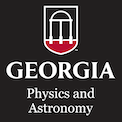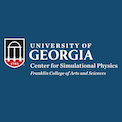I will outline the history of the universe from its early moments in the Big Bang, to the possible end. Our history is full of beneficial catastrophes, and we wouldn't be here without them: stars explode, the Moon is formed in a giant collision with the Earth, the Earth is bombarded by asteroids and comets for hundreds of millions of years, and multiple extinction events through hot, cold, poison, and asteroid impacts cause rapid evolution of life. But here we are, our ancestors survived and thrived through it all. Now, we can tell the story, we can look for more details, and we can begin to adventure through the solar system and eventually beyond, in partnership with a new entity, artificial intelligence coupled with robotics. Scientific discovery has been propelled by competition (including war) for thousands of years, so it's immensely important to public policy. I will illustrate with examples from NASA, including our measurements of the Big Bang, discoveries with the Hubble, and future telescopes like the James Webb Space Telescope (planned for 2018 launch) and beyond. Within a few decades, we may know that life is common in the universe, or perhaps not.
Events Calendar View
-
Special Colloquium
Apr 7, 2016
The History of the Universe from the beginning to the end: where did we come from, where can we go? A special lecture in memory of M.M. "Dunc" Duncan

Guest: Dr. John Mather, Nobel Prize winner and senior astrophysicist at NASA's Goddard Space Flight Center
Thursday, April 7, 2016 3:30 pm - 5:00 pm
Location: Physics Auditorium (202) -
CSP Lunch Seminar
Apr 12, 2016
TIGER2A: A New Accelerated Sampling Algorithm for Large Molecular Systems with Explicit Solvation
-
Special Colloquium
Apr 12, 2016
First LIGO Observation of a Binary Black Hole Coalescence
On September 14th, 2015, the two detectors of the Laser Interferometer Gravitational-Wave Observatory (LIGO) observed gravitational waves from a binary black hole coalescence. I will discuss the context and implications of this discovery. In particular, I will give an introduction to gravitational waves and prominent astrophysical sources, describe how LIGO is able to detect gravitational waves, and explain how to find gravitational wave signals in LIGO data.
I will then describe the (astro)physics we have gleaned from this first discovery, from binary black hole coalescence rates to tests of general relativity. I will end by looking forward to the many exciting future prospects for gravitational wave observations.
-
Awards Ceremony
Apr 14, 2016
Making a Career Cheat Sheet
This week's colloquium slot is dedicated to our undergraduates, starting with a reception, followed by the announcement of the undergraduate awards and closing with a talk by Kathryn Williamson, a former undergraduate student of our department. -
CSP Lunch Seminar
Apr 19, 2016
The Sky is Falling: Simulations of Cosmic Material Raining Down onto our Galaxy

Guest: Dr. Robin Shelton, Center for Simulational Physics, University of Georgia
Tuesday, April 19, 2016 12:30 pm - 1:30 pm
Location: CSP Conference Room (322)Sensitive observations have found enormous clouds of material beyond our Milky Way Galaxy. Some are as large is mini-galaxies with as much mass as 100 million Suns. Others are shreds that were ripped from nearby galaxies. Additional observations show that several nearby clouds are currently interacting with our own Galaxy. Some have reportedly shot through the Milky Way's disk while others are currently passing through the less dense outskirts of our Galaxy. My group has been computationally modeling these clouds, called high velocity clouds (HVCs), in order to determine how they affect our Galaxy and how our Galaxy affects them. In this presentation, I will show how HVCs behave on timescales of hundreds of millions of years, how they shed streamers of highly ionized gas that become incorporated into our Galaxy, and what happens when they collide with the dense gas in our Galaxy's disk. -
Dissertation Defense
Apr 20, 2016
Statistical and Conformational Analysis of Structural Transitions in Finite Systems
Page 65 of 121, showing 6 records out of 723 total, starting on record 385, ending on 390

